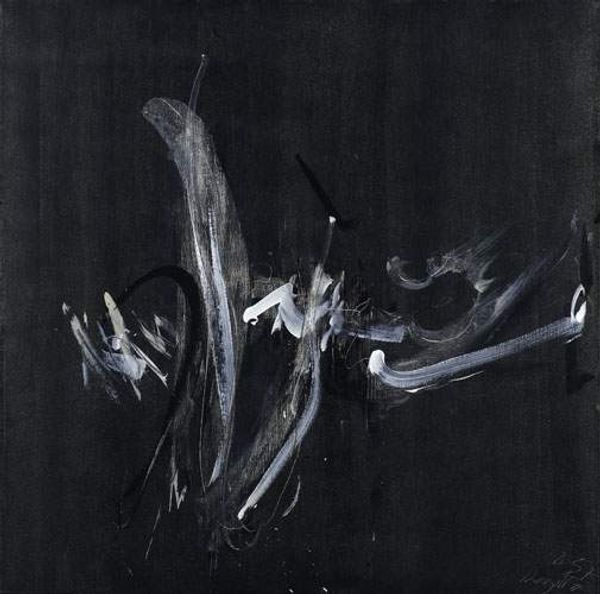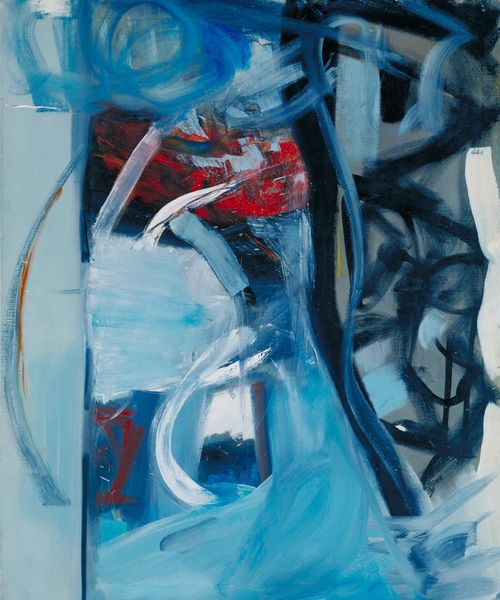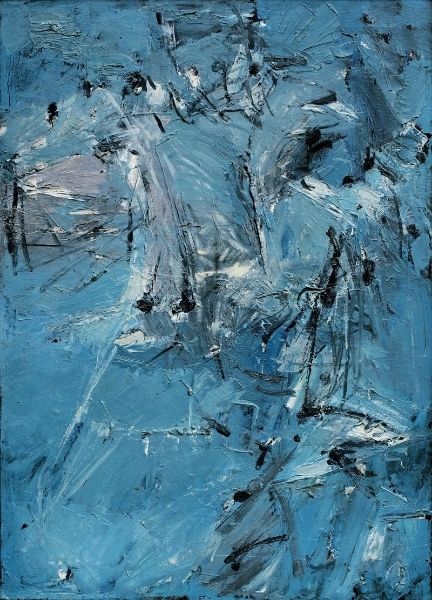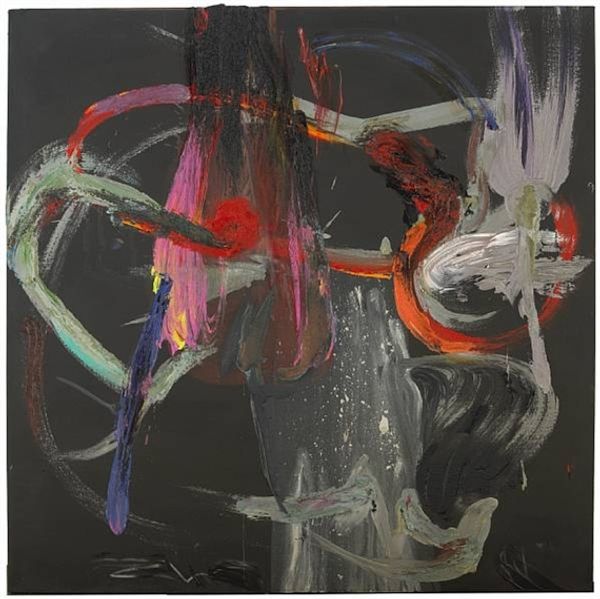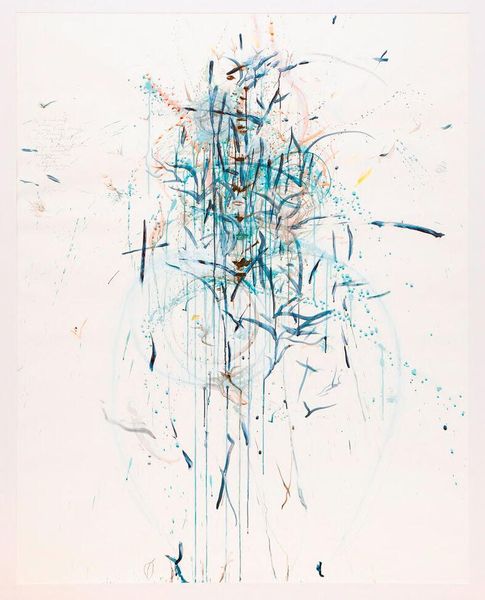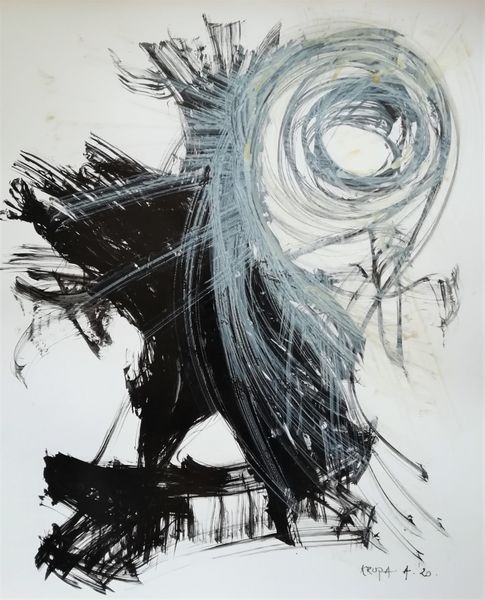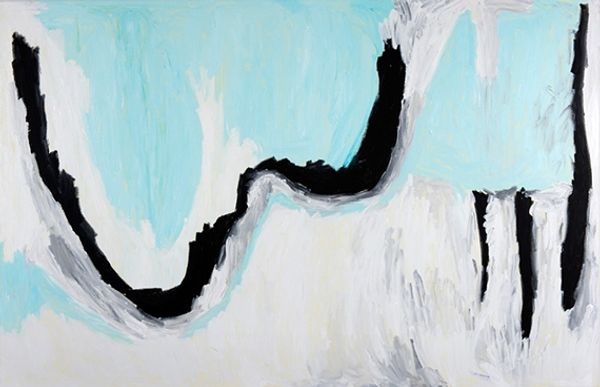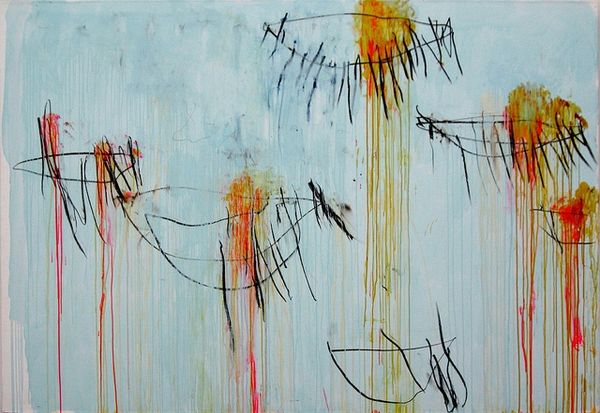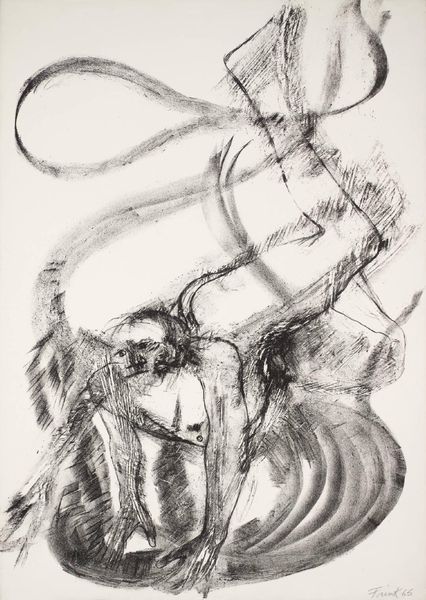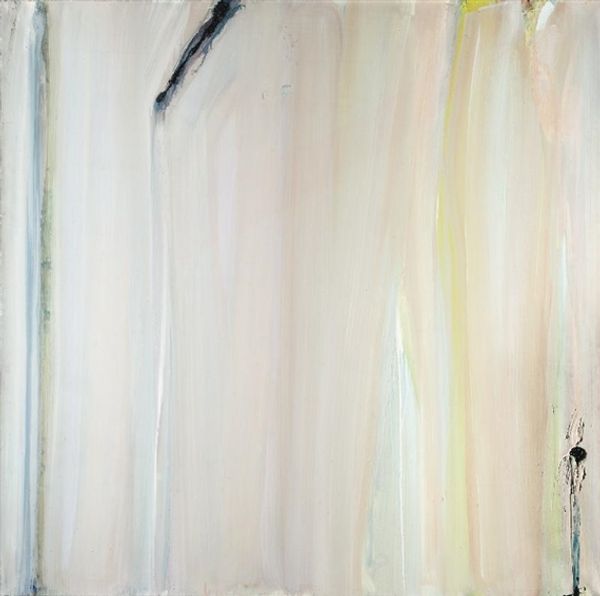
acrylic-paint
#
abstract-expressionism
#
abstract expressionism
#
acrylic-paint
#
form
#
acrylic on canvas
#
abstraction
#
line
#
abstract art
#
gutai
#
monochrome
Copyright: Jiro Yoshihara,Fair Use
Editor: This is "Blue Calligraphic Lines on Dark Blue" by Jiro Yoshihara, created in 1963 using acrylic on canvas. It's quite stark, isn't it? Almost severe in its simplicity. Just this bold blue stroke against a black background. How do you interpret this work? Curator: Immediately, I'm struck by the calligraphic nature of the mark. In many cultures, calligraphy transcends mere writing; it embodies spiritual and philosophical concepts. Consider the Zen Buddhist practice of "ensō," the circle. Could this swirling, incomplete form suggest something similar, a moment of enlightenment, a universe contained in a single brushstroke? Editor: I see what you mean. There's a definite energy to the line. But what about the context of the 1960s? Was there something about that period that might have influenced Yoshihara's use of this kind of symbolism? Curator: Absolutely. Post-war Japan saw a surge in abstract art. Artists like Yoshihara were breaking free from traditional constraints, searching for new ways to express themselves. They synthesized Western Abstract Expressionism with Eastern philosophical traditions. Notice the void surrounding the blue line. The negative space isn't just empty; it’s pregnant with meaning, a contemplative pause, so typical of Asian art. What emotions does the work stir in you? Editor: It makes me feel calm but also restless. Like the form is constantly in motion. Almost like water. It seems paradoxical. Curator: Precisely! The symbol's power lies in its capacity to hold multiple, even contradictory, meanings. The tension between stillness and motion, presence and absence, reflects the complexities of the human experience and our endless quest to understand it. Editor: This has given me so much to think about. I appreciate you untangling that complexity with the ideas of calligraphy and symbolism. Curator: And I thank you for bringing your insightful eye and youthful curiosity to our discussion of how the art both reflects and shapes the viewers across generations.
Comments
No comments
Be the first to comment and join the conversation on the ultimate creative platform.

